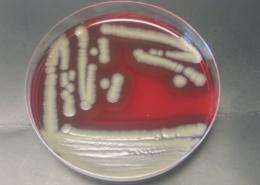Antibacterial effect of phenolic compounds from peat moss and the polysaccharide chitosan

The polysaccharide (sugar substance) chitosan has a documented antibacterial effect. Hilde Mellegard's doctoral research shows that this antibacterial activity varies according to the chemical composition of the chitosan.
Her work demonstrates how chitosan can impede the growth of different kinds of bacteria - including bacteria that cause food poisoning - and provides new insight into the way the substance works. However, the study also shows that phenolic compounds from peat moss have little potential as bacteriostatic agents.
Chitosan is commercially extracted from the shells of crustaceans and is used as a preservative in foods in several countries, but not in Norway up until now. Even though its ability to inhibit bacterial development has already been described, there are few studies related to chitosan's different chemical characteristics.
By means of her study, Hilde Mellegard discovered that the different chemical characteristics of chitosan are of decisive importance when it comes to the degree of their antibacterial effect. Her research also shows that the growth of activated spores of the Bacillus cereus, which causes food poisoning, could be inhibited by applying different types of chitosans. The substance may therefore have potential as an additive to foodstuffs, with a view to preventing the growth of B. cereus spores.
There are few studies of how the chitosans actually affect bacteria, especially on a molecular level. Mellegård demonstrates that when cells of the B. cereus are exposed to chitosan, they become more permeable (i.e. potassium leaks out of them), compared to unexposed cells. In addition, genetic studies show that a pumping system that transports potassium into the cells is activated in cells exposed to chitosan, which may constitute a counter reaction to the leakage of potassium from the cells.
Phenolic compounds have been shown to have a bactericidal effect in several different contexts. Mellegård has identified phenolic compounds in peat moss, Sphagnum papillosum, which is the most common peat-forming plant in Northern Europe. However, these phenolic compounds only slightly inhibited the growth of several bacteria causing food poisoning and therefore probably only have a small potential as bacteriostatic food additives.
Mellegard's doctoral research was carried out at The Norwegian School of Veterinary Science and also during periods of study at the University of Groningen in the Netherlands. In addition, researchers at The Norwegian University of Science and Technology in Trondheim were key collaborators.
Cand.med.vet. Hilde Mellegard defended her doctoral thesis on 9th September at The Norwegian School of Veterinary Science. The thesis is entitled: “Antibacterial activity of phenolic compounds from Sphagnum papillosum and the polysaccharide chitosan”.
Provided by Norwegian School of Veterinary Science



















